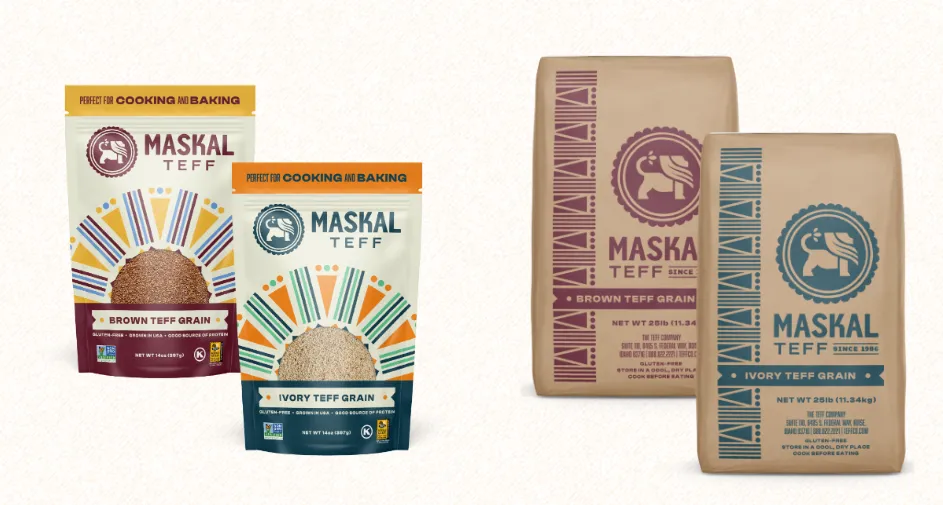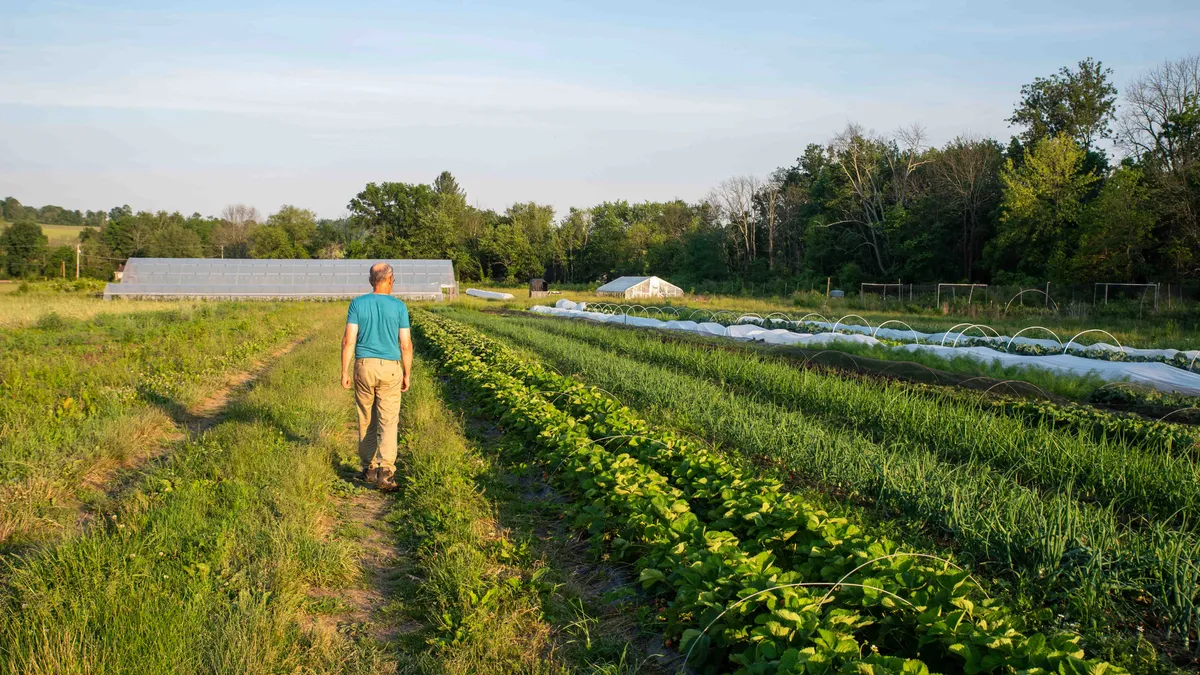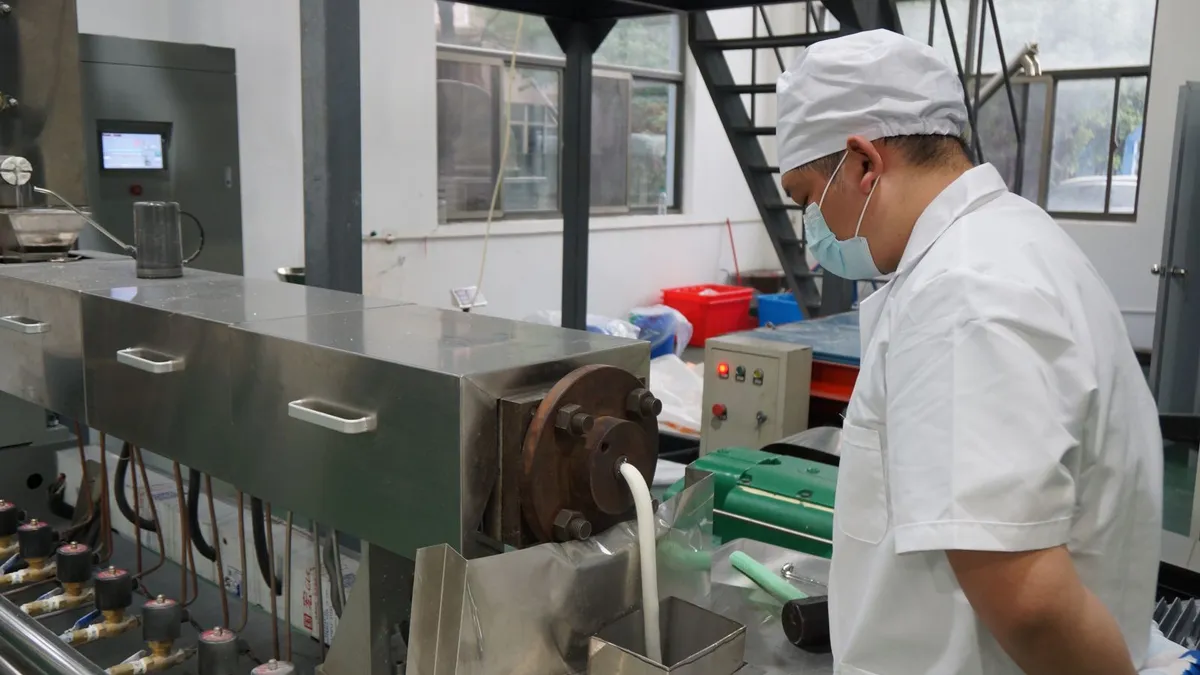For Royd Carlson, the tiny teff grain plays a big part in his life.
Carlson’s dad was working on public health in Ethiopia during the 1970s and became intricately familiar with the culture and cuisine of the East African country. After moving back to the U.S. a few years later, he watched as Ethiopian refugees came here following political instability and famine in their homeland.
As his dad recalled the importance of teff, a small grain about the size of a poppy seed, in their diets, Carlson decided to partner with farmers to grow it in the Western U.S.
Soon a business was born that was on a mission to bring the seed to Ethiopian and Eritrean-Americans, as well as other individuals in the U.S. who were largely unfamiliar with the versatility of the ingredient beyond its use in injera, a sour flatbread that is known for being light and slightly spongy.
“We started selling to people on a pretty small scale,” Carlson recalled. “My parents had a little tiny flour mill in the basement, and we just sort of fill up the flour and send that to people. And really, the business just kind of went from there.”
Today, Carlson is the marketing manager at the Teff Company, a fast-growing producer of the grain used by smaller food manufacturers, a large national bakery chain and a national producer of tortillas and smaller gluten-free baked goods.
Despite posting steady growth in the teens and sales topping $1 million annually, the company is aiming bigger: it wants to make teff as ubiquitous as quinoa by getting it into the hands of a diverse range of consumers. Executives admit it will be a challenge.
“It’s still on the periphery like quinoa was 10 years ago,” said TJ Anderson, Teff Company’s business manager. “It’s market viable, but people are still kind of largely not aware of it.”
It’s far different from how the ingredient is used in Ethiopia, where more than 90% of the crop is grown. Teff grains, which are white, mixed or red, account for about two-thirds of the daily protein intake in the Ethiopian diet where they are used to make injera, porridge and feed, according to the United Nations’ Food and Agriculture Organization.
Spreading the word
In an effort to get more U.S. farmers to grow teff and more businesses and consumers to buy it, the Idaho-based company is aggressively working to promote the ingredient known for its earthy and nutty flavor.
Similar to other grains, teff contains a lot of the attributes that are in demand by consumers. It’s loaded with iron, magnesium, fiber, calcium and protein. Teff is gluten-free. Farmers in the Western U.S. tout its favorable environmental footprint compared to other grains, such as its low water use, as well as its ability to be rotated with other crops.

Stephen Foster, an associate professor at the University of Nevada in Reno, said while teff needs less water to grow, largely because of its short growing season, its small size makes it difficult to harvest. It also needs people who can market and process it. He speculated teff would, at least for now, remain a niche product.
For teff to really gain traction, he said, it would need to be more heavily promoted for its gluten-free attribute, a message he doesn’t see happening right now.
Teff Company and its 21 employees are also working with online influencers to increase exposure by coming up with recipes using the grain and flour to promote it as a new, more accessible product. At the same time, it’s trying to create food samples such as crackers, chips, breakfast cereals, pasta and bread with teff that it can use to tout its versatility to prospective food companies.
”It’s really about making teff an ongoing concern,” Carlson noted. “We’re definitely trying to get the word out.”
While teff is loaded with benefits that are not as prevalent as in other grains, it does have some embedded challenges.
The most glaring is that teff is loaded with fiber, so it absorbs more water than other flours, Carlson noted. This requires food manufacturers to make changes to recipes to achieve the same consistency. Teff is dense, so it doesn’t work as well alone in leavened products like bread. Other things like density, elasticity and particle size make it difficult to exchange with other flours on a one-for-one basis, he noted.
Anderson noted that Teff Company hasn’t actively been marketing teff because it’s already selling what it contracts with farmers to grow.
The company said the current pace allows it to recruit and get new farmers growing teff ramped up. It also ensures the business can meet demand and that it doesn’t have too much of the grain left over that it can’t sell. Last year, the acreage used by farmers to grow teff for Teff Company increased by about 25%.
“Some people you might say, ‘Okay, there's this small, quickly growing big company, and it's just a bunch of business people looking to figure out how they can make a living or get rich and sell off their brand, ’ Anderson said. “It's more about how you can kind of elevate or feature a product that maybe is under-appreciated largely, and find a way to make that more of a fixture in a broader culture.”




















